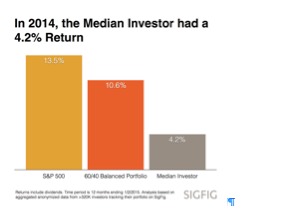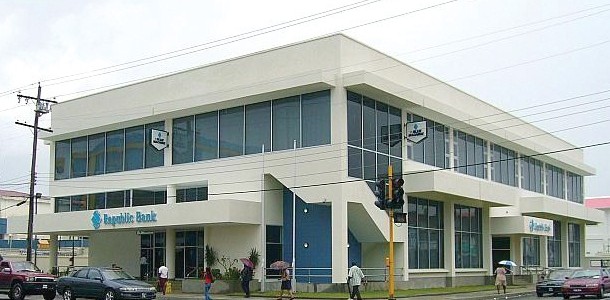2014 was another good year for the U.S. stock market, but most investors were not able to fully participate in the market’s gains.
The S&P 500 Index was up more than 13% for the year, but according to a study from SigFig, the median investor’s investment account rose only 4% last year.

The U.S. stock market was the place to be in 2014. While U.S. large cap stocks achieved double-digit returns, bonds and small cap stocks were only up in the single digits, and international stocks were actually down for the year.

Solid Year
And midcaps, while also trailing large caps, had a pretty good year in 2014, up almost 10%.

In short, 2014 was a year that did not reward diversification. However, we know that over the long-term, portfolio diversification is very important in order to maximize return and minimize risk.
Putting all your eggs in one basket may pay off in the short-term, but it is not a prudent long-term strategy.
Why is it important to be diversified? It is all about correlation.
If all your portfolio assets move in the same direction in relation to each other, if they are “correlated”, then you are not sufficiently diversified. What diversification provides in essence is an “insurance policy” in down markets.
2014
As anticipated, the U.S. economy showed marked improvement this year. Employment levels and new job creation are strong. Wages are finally starting to move up. And the latest quarterly GDP number came in at a very robust 5%.
Most recently, low energy prices have provided a nice tailwind for the economy particularly in consumer-related areas like retail. Thanks to lower prices at the pump, consumers have more cash in the wallets to spend.
But there were also some big surprises last year.
- Whereas the U.S. economy has been steadily improving, Europe, Asia, and many other economies have not kept pace. Their recovery has stalled and as a result, international markets and investments have significantly lagged the U.S. markets.
- For most of the year, the big winners of 2013, small cap stockshave not kept up with the overall market and are up only marginally for the year.
- Interest rates have not moved higher! This was one of the biggest surprises of this year. Despite progress in the U.S. economy, slow economic growth overseas and declining energy prices are keeping interest rates low.
2015
What’s in store for the markets next year? Here’s what most market strategists expect:
- Interest rates will rise – At some point, given the current strength of the economy, the Fed will begin slowly raising interest rates.
- Non-U.S. markets should improve – International growth should begin to recover as other countries implement stimulus measures similar to what succeeded in the U.S.
- Oil price will stabilize – Oil prices should begin to stabilize as supply-demand imbalances finally work themselves out.
- U.S. still strong – U.S. companies should continue to hire and invest in their future growth, which is good for stocks, corporate earnings and the general health of the economy.
- Housing recovery continues – Despite higher interest rates, the housing recovery should continue given strength in the job market and improved consumer confidence.
- More of the same in the first half – During the first half of the year, the U.S. continues to look like the place to be, but opportunities may emerge outside the U.S. by the second half of next year.
Mid-caps
Mid-cap stocks should see strong earnings given improvements in the health of the overall economy. Consumer-related midcaps look particularly attractive as falling commodity prices put more money in consumer pockets.
Mid-cap banks also look interesting, offering improving fundamentals and attractive valuations. Their margins stand to benefit when the Fed starts to raise interest rates.
Should the U.S. dollar remain strong relative to other currencies, midcap companies also tend to have less foreign currency exposure than larger companies
And finally, once the energy market stabilizes, there could be future opportunities among midcap exploration and production companies.
Photo Credit: Kate Hiscock via Flickr Creative Commons
DISCLAIMER: The reader should not assume that any investments identified were or will be profitable or that any investment recommendations or investment decisions we make in the future will be profitable. Past performance is no guarantee of future results.


